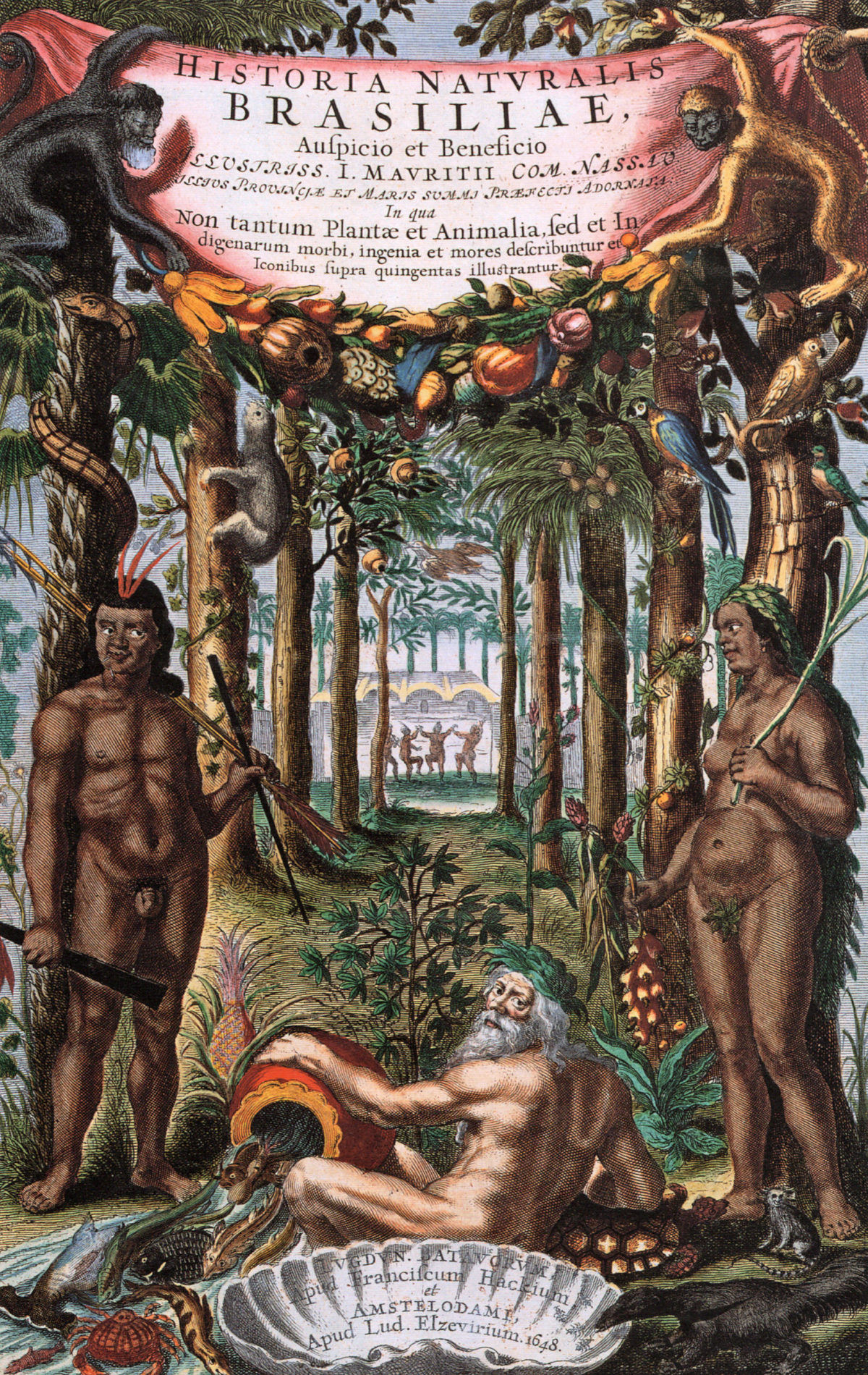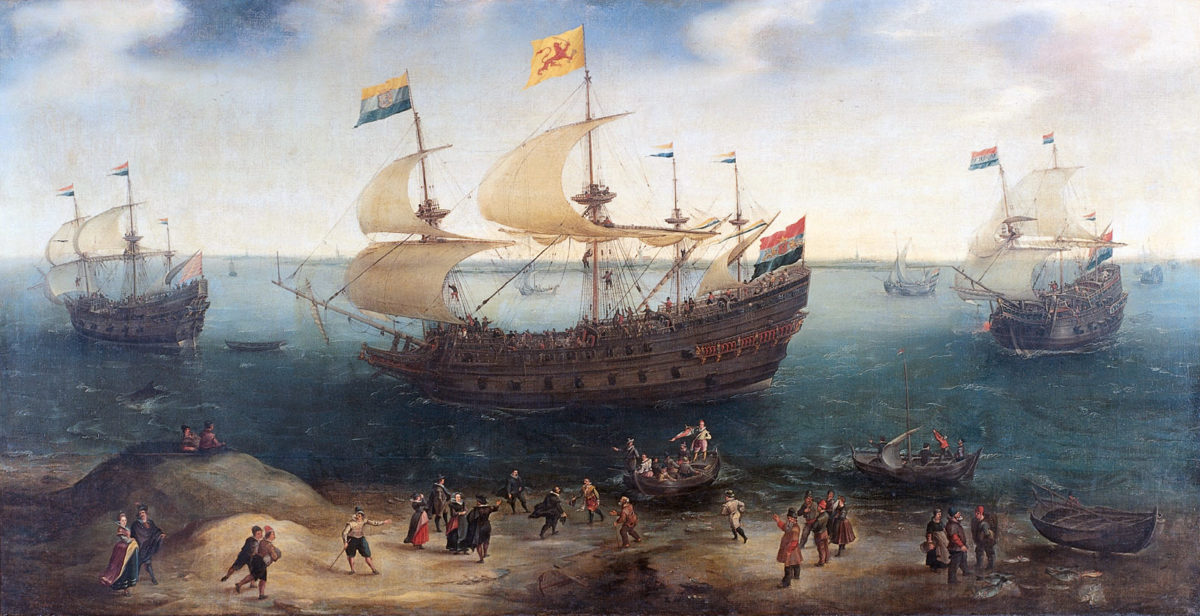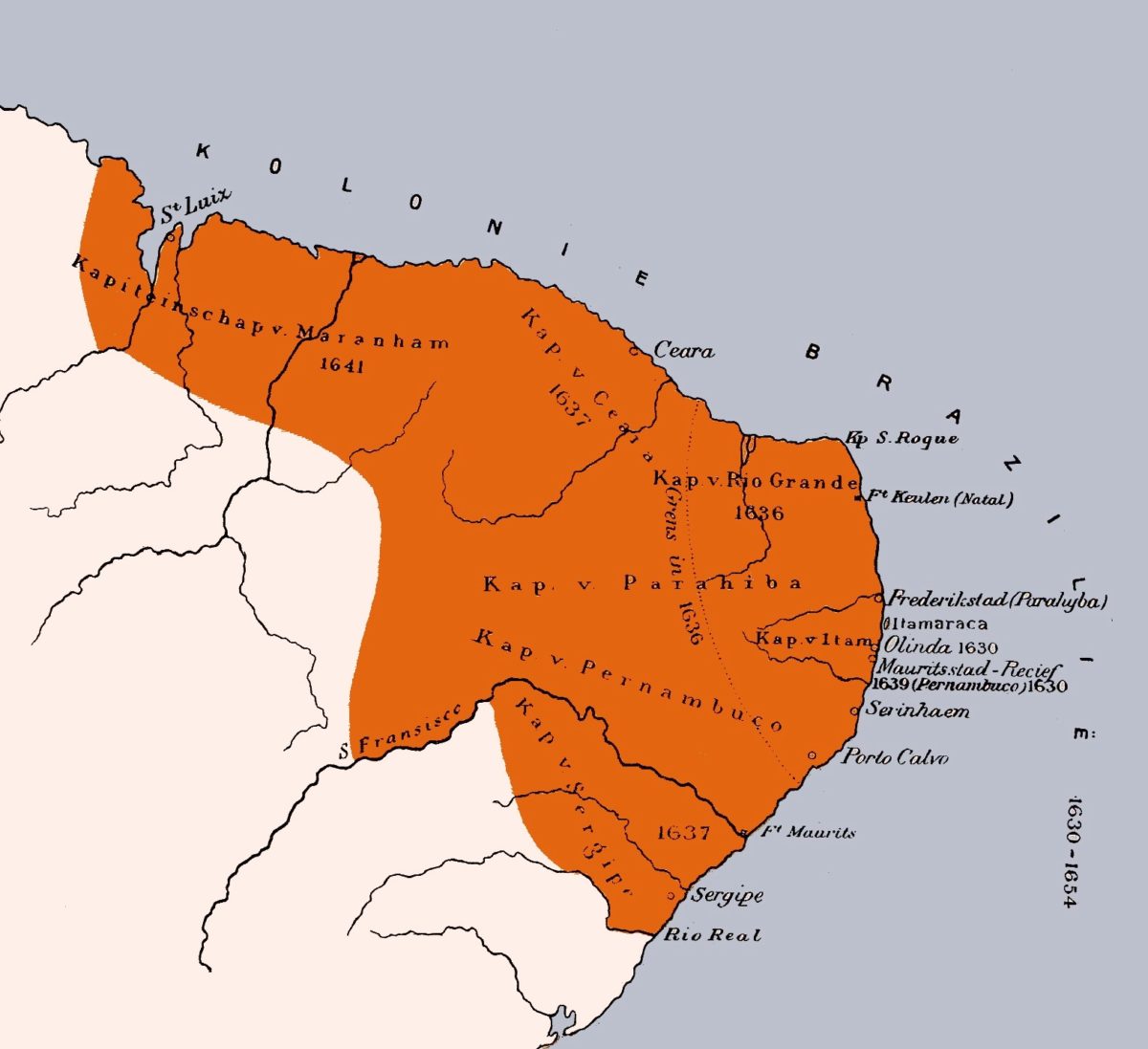Present day Holland is quite a nice country. Civilized, tolerant, rich,
peaceful: European civilization at its best. Few remember that in XVII century
Holland built a vast colonial empire with sword and fire. While at home they
were fighting a long, bloody war of independence against the Spanish armies,
the Dutch threw themselves into the conquest of the seas. In Asia they
overwhelmed the Portuguese and secured the control of the Indian Ocean and of
the spice trade. In Africa they built fortresses and trading posts along the
coast and they became the main slave traders. In America they were the first to
colonize Manhattan, occupied several Caribbean islands and some mainland
territories and acting as middlemen they almost monopolized the trade among the
English colonies and between the colonies and Europe. Their merchant fleet was
by far the largest in the world and Amsterdam was the center of world trade and
finance. And of sugar refining.
At the beginning of XVII century, Holland was the richest and the most
modern and technologically advanced country all over Europe. The Dutch were also
the pioneers of commercial distillation onalarge scale, we already
know that the very word brandy is
thought to derive from the Dutch gebrande
wijn. In 1624 the Dutch West India Company occupied the coastal region of
Pernambuco, now Recife, in Brazil, then part of the Spanish Empire. Pernambuco
was a great producer of sugar and after the military occupation the Company
made great investments, bringing from Holland men, capital, technical skills,
equipment.
In 1638, Georg Marcgraf and Willem Piso arrived in Pernambuco to join the
brilliant entourage of the new Governor, Count Johan Maurits of Nassau-Siegen.
In spite of their youth, both were already renowned naturalists. The older of the
two, Marcgraf, was born in 1610 in Liebstadt, present day Germany. In his
university years, he had studied mathematics, medicine, botany and first of all
astronomy. The Count built for him a real observatory and, for his astronomical
observations, he was later called the First Astronomer of the Americas. The
younger Willem Piso was born in Leiden, Holland, in 1611. He had studied
medicine in France, then had returned to Holland and joined the circle of the
great geographer and humanist Johannes de Laet. Today he is considered one of
the founders of tropical medicine. During their stay in Brazil, they
participated in many long excursions to collect samples from near and far.
Sometimes they were escorted by Dutch military officers, sometimes they joined
the Brazilian and Tapuyas military raids against enemy Indian groups.
They discovered animals and plants, drew maps, made extensive observations
of nature and also of the men inhabiting it. They also made use of the scientific institutions that the Count had
built in Recife: a zoo, a botanical garden and a museum. The huge amount of
information they gathered enabled them to write the first systematic study of
American nature. Marcgraf wrote his notes in a personal, secret language that
others could understand only with great difficulty. Probably, he meant to
translate his notes when he got back to Holland, but he died in 1643, in Angola
while he was drawing a map of the Dutch settlements there. Piso, on the other
hand, returned safely to Holland and continued to practice and study medicine.
Marcgraf’s notes were translated, ordered, united to Piso’s ones, and published
in Latin by Johannes de Laet in Amsterdam in 1648 under the title of “Historia Naturalis Brasiliae”, Natural
History of Brazil. Latin was the
common language of cultivated people of the age, the Republic of Letters, and
the book had a big and lasting success, possibly because, from the very
beginning, the authors emphasized their own direct experience in Brazil and
their great efforts on the field, unlike the many armchair natural historians
who never visited the New World and wrote their books at home in Europe, on the
accounts of some travelers.
Why am I speaking about an old, half-forgotten book written in Latin?
Because in this book I found the historical evidence that in Dutch Brazil they
commonly distilled a strong spirit from sugar cane.
Let’s see in detail. “Historia
Naturalis Brasiliae” devotes a whole chapter, written by Willem Piso, to
sugar. Hardly surprising, since the Dutch had gone to Brazil mainly to take
hold of its precious sugar. But, like many of his contemporaries, Piso is also
struck by the complexity and sheer spectacle of sugar making. At the time in
Europe there were hardly any big factories. Manufacturing took place in many
small workshops where often a singlemasterworked leisurely, assisted by few
apprentices. In sugar factories, on the other hand, during the harvest, “night
and day tongues of fire rise up, terrible in their blaze”, around which scores of black, half-naked, sweating men bustle in
a frenzied way. The sugarcane is unloaded from the carts, cleaned, cut and
squeezed. And the juice gathered is boiled in the cauldrons. All in quick,
rigorous succession and hurriedly, breathlessly … a hellish scene, a veritable “Tropical
Babylon”, as a contemporary author wrote.
Piso had first to understand himself what he was seeing, and it was not so
easy. Then he had to explain it to his European readers. And he had to explain
it in Latin. But the ancient Romans, whose language he wrote in, did not know
sugarcane, sugar factories, sugar, stills, distillation or spirits. It was
therefore necessary tointroduce new
words into Latin, such as caldo for
the juice of the cane. Or bend old words, born in an entirely different
context, to make them express a new meaning; so, vinum, wine, becomes a general term for every alcoholic (fermented)
beverage.
After describing how sugarcane was squeezed and the caldo collected, Piso writes: “Thence, mixing some water with it, they make also a wine, popularly called Garapo: local people ask for it greedily and on it, if it is aged, they get drunk. …So, from this first liquid (that is, the caldo), sugary wine, vinum adustum,acetum, cooked honey and sugar itself can be prepared.”
Let us give a good look at this list.
Sugary wine is the Garapo,
that is the fermented beverage made from sugar juice (and maybe also from
molasses), a word with a long History in Latin America, see for instance modern
Spanish guarapo.
Acetum (vinegar) is the raw juice of the cane mixed
with water. We know that after a few days it went sour and was used in
medicine.
Cooked honey is molasses. I am not an expert of philology
(sad to say), but it is likely that the English word molasses came from the
Spanish melaza or the Portuguese melaço, based respectively on the words miel and mel, honey.
And, of course, sugar is sugar.
So, what is this vinum adustum?
The literal translation is “burnt wine”. Evidently, it was another beverage,
besides Garapo, that was obtained
from the sugarcane. A beverage which was made by burning the Garapo itself. And maybe this is what
Piso refers to when he writes “and on it, if it is aged, they get drunk.”
We know that in Piso’s Netherlands a burnt wine was already widespread. It
was made by burning, that is, distilling the wine made from grape juice and it
was extremely strong. It was called gebrande
wijn, better known later as Brandy.
Piso must bend his Latin to describe something which in Latin did not
exist and which is similar to brandy. He is telling us that the fermented beverage
made from the cane juice was then burnt, that is, distilled in a still, as they
did for brandy, resulting in a new beverage, as strong as brandy. He does not
have a specific name for it yet and, basing himself on the production process,
calls it vinum adustum, burnt wine.
But now we can call it by the monosyllabic power of its modern name: Rum.
So, now we know that in Dutch
Brazil they produced rum. But there is more. Reading Piso’s description carefully
it is evident that this new strong beverage was, in Dutch Brazil, something
commonplace, locally well-known and widely-spread. It is hard to think that it
was a recent invention of the just arrived Dutch. Moreover, all the sources of
the time confirm that the Dutch were not skilled in the growing and processing
of sugarcane, which they left largely in the hands of the Portuguese landowners.
So it is reasonable to think that it was the Portuguese who started the
production of this new beverage, before the arrival of the Dutch.
It is easy to recognize that the conclusions
of this research are consistent with Prof. Azevedo’s essay. To sum up, thanks
to the documents quoted by Prof Azevedo and in accordance with his analysis,
and with the help of a careful reading of Piso’s part of the “Historia Naturalis Brasiliae”, we can
conclude that Brazil is the real birthplace of Rum. And that its birth happened
probably at the beginning of XVII century.
Marco Pierini
PS: if you are interested in
reading a comprehensive history of rum in the United States I published a book
on this topic, “AMERICAN RUM A Short
History of Rum in Early America”. You can find it on Amazon.




